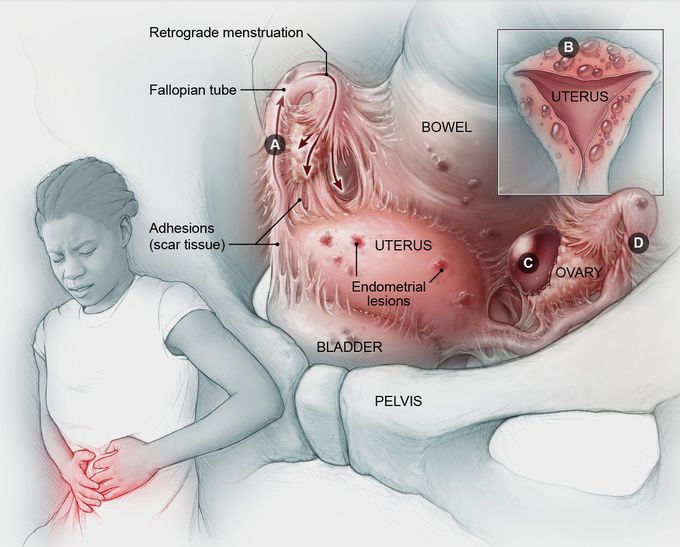


ENDOMETRIOSIS
Endometriosis is an often painful disorder in which tissue that normally lines the inside of your uterus — the endometrium — grows outside your uterus. Endometriosis most commonly involves your ovaries, fallopian tubes and the tissue lining your pelvis. Rarely, endometrial tissue may spread beyond pelvic organs. Symptoms The primary symptom of endometriosis is pelvic pain, often associated with menstrual periods. Although many experience cramping during their menstrual periods, those with endometriosis typically describe menstrual pain that's far worse than usual. Pain also may increase over time. Common signs and symptoms of endometriosis include: Painful periods (dysmenorrhea). Pelvic pain and cramping may begin before and extend several days into a menstrual period. You may also have lower back and abdominal pain. Pain with intercourse. Pain during or after sex is common with endometriosis. Endometriosis is sometimes mistaken for other conditions that can cause pelvic pain, such as pelvic inflammatory disease (PID) or ovarian cysts. It may be confused with irritable bowel syndrome (IBS), a condition that causes bouts of diarrhea, constipation and abdominal cramping. IBS can accompany endometriosis, which can complicate the diagnosis. Pain with bowel movements or urination.You're most likely to experience these symptoms during a menstrual period. Excessive bleeding. You may experience occasional heavy menstrual periods or bleeding between periods (intermenstrual bleeding) .Infertility. Sometimes, endometriosis is first diagnosed in those seeking treatment for infertility. Other signs and symptoms. You may experience fatigue, diarrhea, constipation, bloating or nausea, especially during menstrual periods.



